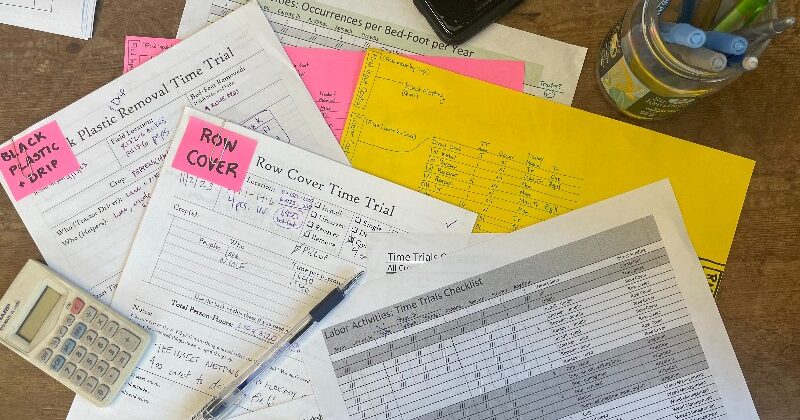What to Grow? Spreadsheets Offer an Answer!
How do farmers decide what crops to grow each year? So, so many variables go into that decision. Of course, we like to grow what our customers want to eat. (Speaking of which, keep your eye out for our annual survey that will be sent to our CSA members in a few weeks!) We take into account year-to-year crop rotations, negotiations with local grocery stores, sales volumes of previous years, and even how much the crew enjoys tending to each crop. We also have to make sure we’ll have time to care for each crop, and so we try to spread out the most time-intensive harvests over the season. For example, raspberries mature in the early summer, then fall off when green beans start to mature, which then give way to winter squash.
As we support our crops, our crops must also support us when it comes to sales. But how do we know whether a crop is profitable? How much does it cost to grow, say, one bunch of carrots?
Red Dog has been participating in a new program called Know Your Costs to Grow that is building a tool for farmers that compares the costs associated with growing different crops. The tool asks for loads of data for its calculations: How much do we spend on drip tape and row cover? How about bags, boxes, twist ties, and other packaging? How much does it cost to run each tractor? For labor costs, how much time do we spend seeding, cultivating, irrigating, handling row cover, harvesting, and washing each crop? We now have a wealth of time trials and calculations from spreadsheets that we’ve entered into this tool. We’re only just starting to see results, but it will be interesting to see whether the tool says it’s worthwhile financially to go big on strawberries, say, or to scale back on radishes.
But we won’t be making our cropping decisions based solely on dollars. We already expect that certain crops, like sweet corn, aren’t huge moneymakers, but we know how much our CSA members value the broad diversity of produce that comes from our farm. This tool just gives us one more aspect to consider when planning for the future.
~Rachel

